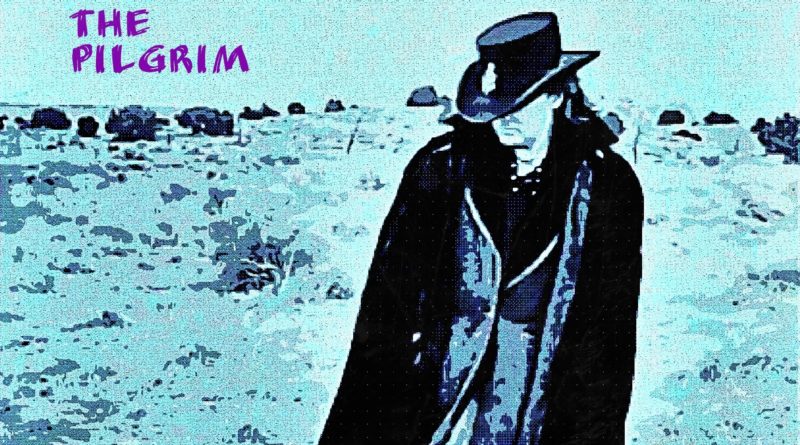Come On, Pilgrim: The Odyssey Of A Marty Stuart Masterpiece
New coffee table book gives a “wall-to-wall” look into the singer’s star-studded, ill-fated 1999 LP

Much to his everlasting credit, Marty Stuart has always been a true believer, a man convinced he’s a keeper of the flame and a vital part of the now disrespected traditions of country music.
Having married into the Cash clan, the singer/songwriter and string player, who’s especially skilled on mandolin, venerates the Carter Family, Johnny Cash, George Jones, Lefty Frizzell, Patsy Cline and all the inspirations and purveyors of 50’s and 60’s country music. Being genuine country has become Stuart’s defining pitch.
Unfortunately, by the early 1990’s, Nashville was deep into a sea change—a turn away from heritage towards pure commerciality. Embraced as the way to become not just country music stars but worldwide celebrities, or in Stuartspeak, “to grow country music into a blue-chip commodity made palatable for the masses,” this worldview spawned, in ever increasing numbers, what Stuart calls “foolproof, mainstream fare.” Sadly, in the rush to leave the fiddles, pedal steel guitars and world class storytelling behind—and keep George Jones, Merle Haggard and Willie Nelson off award show telecasts—country music lost its emotional punch, instinctive intelligence and worst of all: its soul.
In other words, everything that made it special in the first place. But the flood of cash that rolled in eased worries about disconnecting from the past. And so the formula that turned up the volume, aimed for a mass market and blurred the music into bland adult pop dreck remains Nashville’s playbook to this day. While all artforms have to grow and change to stay vital, for those who love country music’s past, Nashville’s race to the dumb-downed bottom has been a damned shame.

Before he gave up trying to be relevant in today’s “country” music conversation, Stuart decided to take a stand and write a “love letter to country music,” and wrap it in that rarest of country music recording projects: The Concept Album. Aiming to be a southern gothic epic that touched upon such exalted and eternal themes as love, loss, betrayal and redemption, Stuart embarked on journeys across America and as he says in his liner note to the new coffee table book/CD package, The Pilgrim, A Wall to Wall Odyssey, “I sought vision.” Upon his return, he wrote and recorded, The Pilgrim, with help from guests like Johnny Cash, Emmylou Harris, Ralph Stanley, and Earl Scruggs.
Even today you can almost see the Music Row faces scrunching up in doubt as they listened to Stuart’s plan for The Pilgrim, let alone the final record. Needless to say this admirable tale, this final statement from a traditionalist fast falling out of fashion, did not have a particularly happy ending. The Pilgrim was not a commercial success. The ill-chosen, horribly titled first single “Red, Red Wine and Cheatin’ Songs,” (a wiser choice would have been “Draggin’ Around These Chains of Love,”) sunk quickly in the genre’s rising sea of sweet pop singles. It’s no coincidence that The Pilgrim, was Stuart’s last for MCA where he’d once been one of its biggest stars. Even more than a celebration of American roots music, Wall-To-Wall is the chronicle of how country music lost interest in its past and broke the heart of one of its most fervent believers.
VIDEO: Marty Stuart and the Rock & Roll perform “Pilgrim/Red Red Wine”
Heard anew thanks to the CD that’s included in the Wall to Wall Odyssey package, it’s clear that along with being a labor of love, The Pilgrim is a solid record, albeit one that perhaps asked too much from the intended audience who were then being charmed by “Achy Breaky Heart.” Of the nine solid bonus tracks included, the sweetest is a short, acoustic final chapter of the title track that did not make the original album, “The Pilgrim, Act IV” with Stuart, Emmylou Harris and Connie Smith panned hard right and Ralph Stanley alone in the left channel which gives way to one of Stuart’s patented rockin’ Telecaster romps, “That’ll Be Alright with Me.”
As detailed in A Wall-To-Wall Odyssey, Stuart took The Pilgrim’s flop hard. But at least he’d had his say. Assured by Johnny Cash (according to a story he tells in the liner note) that The Pilgrim would someday be rediscovered, Stuart has decided to try and nudge that idea forward with the release of this deluxe package. After a chapter celebrating his part in the Class of ’55 sessions along with Cash, Nelson, Jerry Lee Lewis, Carl Perkins, there’s a tribute to Bill Monroe who Stuart met when he was 12 years old, and an appreciation for illustrator Thomas B. Allen who worked with Columbia Records and designed many album covers for Flatt & Scruggs, the band in which Stuart began his career. The plan to make spiritual journeys by calling on the “staggering collection of people in my phone book,” climaxed with an epiphany in a hotel in Hollywood when he remembered the story of a suicide in his hometown of Philadelphia, MS inspired by a love triangle. Chapters on the “Songs” and the “Sessions” are followed by an appreciation of Johnny Cash, and finally a fairly painful, at times bitter recounting of The Pilgrim’s failure and Stuart’s final coming to terms with the album’s disappointing trajectory.
If this all sounds a bit jumbled—it is. The book is extensively illustrated with both Stuart’s amateur photography and a lot of shots of Marty and musician friends. A fanboy feel hangs over the many grip ‘n’ grin shots of Stuart with the likes of Bob Dylan, Keith Richards, John Lee Hooker, Bill Clinton and Pops Staples. Marty’s been in with the big boys—we get it. And the lavish praise heaped upon him in a series of forwards and epilogues to this project including one where he’s called “a blessing,” is often shamelessly ridiculous. It’s clear Stuart is still smarting over The Pilgrim and needing praise for what he considers his masterpiece. And yet there’s an earnestness about the whole project that is undeniably appealing. Despite the fate of The Pilgrim, Stuart remains genuinely “awed by those musical architects who’d set into motion a sound and a language which was a simple heartfelt reflection of the human condition.” And for that, Wall-To-Wall Odyssey is again worth a listen.




